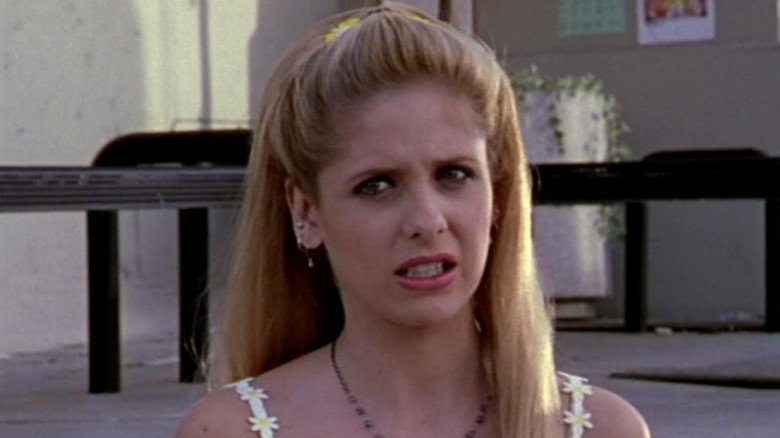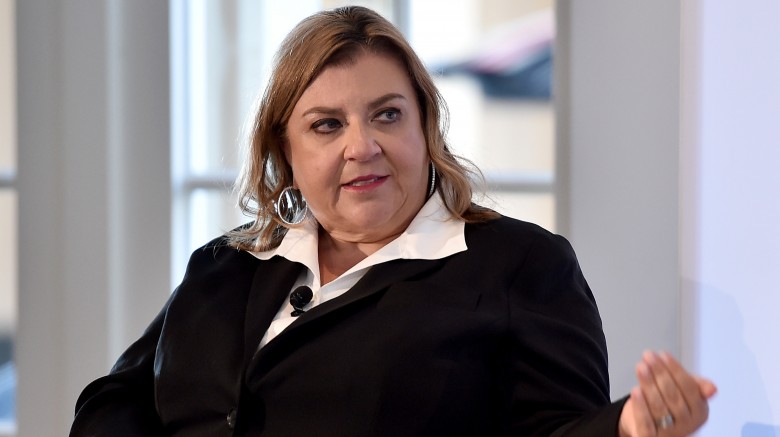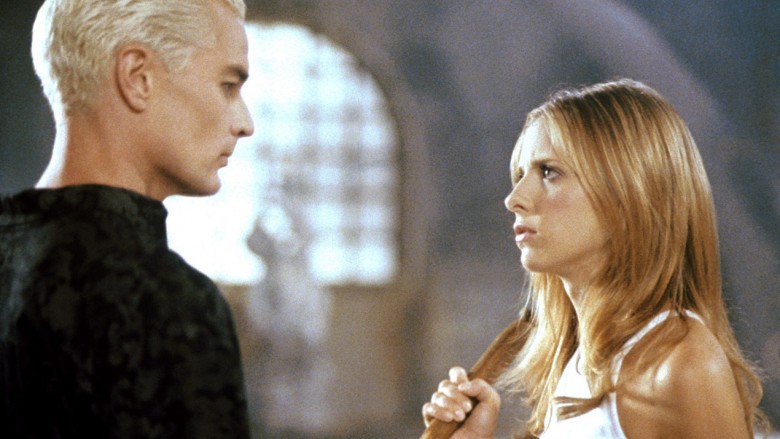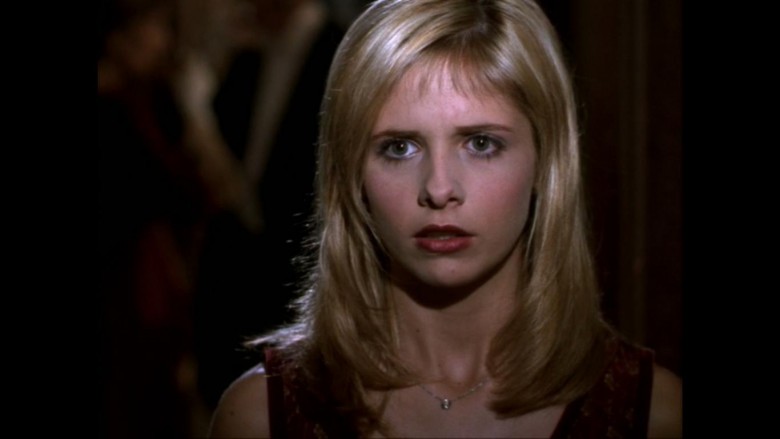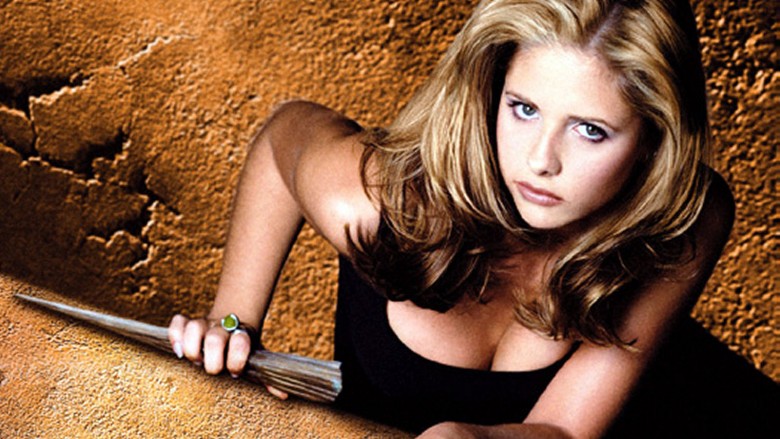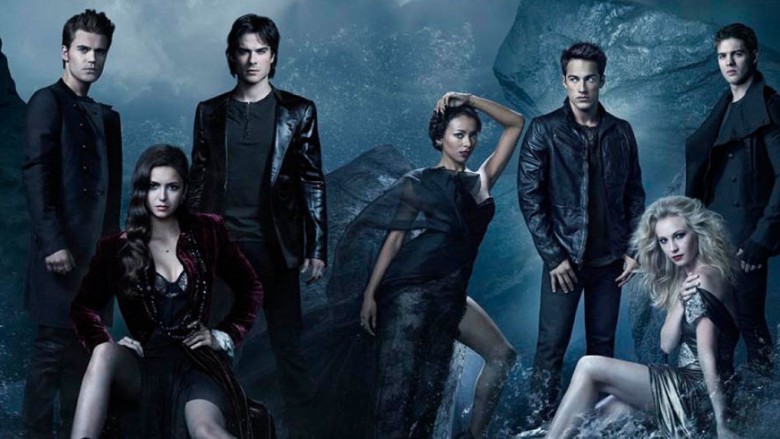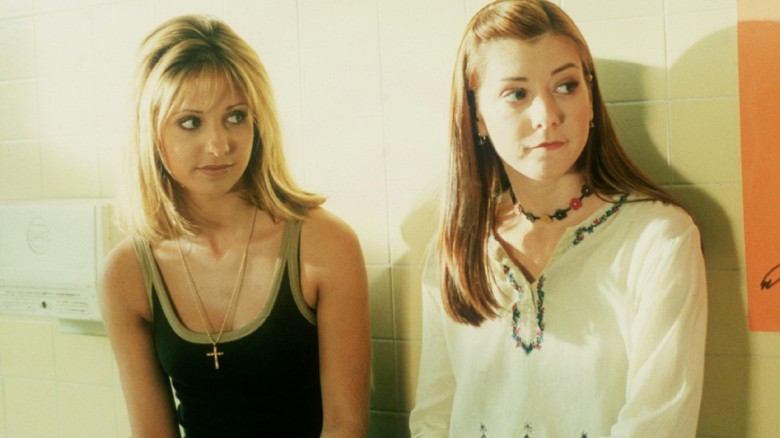Why Buffy The Vampire Slayer Almost Didn't Happen
It's hard to imagine Buffy the Vampire Slayer as anything other than a genre-defining, star-launching hit. However, early on in the show's run, the quirky series—based on the oft-forgotten campy film of the same name—was anything but a sure thing, facing issues on every step of its journey to the small screen. Luckily for fans, Buffy did (eventually) make it, but the show endured a long journey through development hell that nearly kept it off the air entirely. Here's how Buffy the Vampire Slayer almost didn't happen.
The movie had a bad reception
Many hardcore Buffy fans who've gone back and watched the 1992 movie that inspired the show have been shocked by how different it is. The film, starring Kirsty Swanson as the titular vampire slayer, lacked the bite of the TV series, focusing heavily on Buffy's valley girl lifestyle and less on her growth over the course of her life as the chosen one. While the movie had a bankable star in Beverly Hills, 90210's Luke Perry, it wasn't exactly a huge hit, earning only $16.6 million against a $9 million budget and failing to resonate with critics.
Creator Joss Whedon penned the script for the film, but he wan't in the director's chair, with Fran Rubel Kuzui taking on that role. Kuzui later alleged that the studio rushed the timing for the film, fast-tracking the project due to Whedon's "slam dunk" script (which Kuzui later rewrote). The six-week shoot (which the filmmakers only had five weeks to prep for) reportedly resulted in numerous scenes being cut, which might have had a part in reviews saying the plot was "very thin" and the comedy was "patchy." The film's inability to find and capture an audience soured studios on the story, and almost led to Buffy becoming a forgotten footnote.
Joss Whedon was nervous to go back to the story
The movie left a bad taste in Whedon's mouth as well. It served as the young filmmaker's first foray into bigger projects, and he's admitted he was surprised to see how much of his script was changed. "It didn't turn out to be the movie that I had written," he said. "They never do, but that was my first lesson in that. Not that the movie is without merit, but I just watched a lot of stupid wannabe-star behavior and a director with a different vision than mine—which was her right, it was her movie—but it was still frustrating."
Aside from Kuzui's script changes, Whedon, who spent a lot of time on the set of the film, also had a big conflict with Donald Sutherland, who played Buffy's first watcher, Merrick. According to Whedon, Sutherland would often rewrite all of his dialogue in a way that didn't make sense, something Kuzui reportedly allowed. On top of that, Whedon said Sutherland was rude on set, coming in with "a very bad attitude" on a daily basis. "He's a great actor," Whedon said. "He can read the phone book, and I'm interested. But the thing is, he acts well enough that you didn't notice, with his little rewrites, and his little ideas about what his character should do, that he was actually destroying the movie more than Rutger [Hauer, who was criticized for his over-the-top performance as the villain Lothos] was."
The project overall made Whedon ready to move on from Buffy, despite his wife's suggestion that he might get the chance in a few years to make the story the way he wanted to. Luckily, someone else had that ideal, bringing Whedon back into the fold for a new project based on his idea.
The producer contemplated doing it without Whedon
Buffy wouldn't be Buffy without Whedon at the helm, but he wasn't the top choice to head the show. The idea for a series first came from Gail Berman, a producer who saw the script for the 1992 film before it was released and, after giving the movie a few years of breathing room, decided to pursue the idea further. She had to contact Whedon about the project first, although the two had never met—something Whedon recalled as basically a courtesy call. "They called me out of contractual obligation," he said. 'Call the writer, have him pass.'" However, Berman quickly realized that she and Whedon had similar ideas for what they wanted to do, with Whedon saying he liked the idea of creating a show that used horror as a metaphor for the awfulness of high school. With Whedon on board, the pair started pursuing next steps for getting the show on the air—but that would prove to be even harder.
Multiple networks passed
Buffy was a risky bet for a number of reasons, and it was tough to sell the show to any network. Berman first went to Fox, where she thought the show would be a great fit, but the network turned it down. They then took it to NBC, who also said no; TV's Buffy wouldn't find a home until they took it to the upstart WB network, a fledgling property that was trying to find an audience niche. It was basically the perfect storm, with the WB just beginning to emerge alongside the internet, resulting in a changing TV landscape more willing to take risks on shows like Buffy. Still, even the WB wasn't willing to latch on right away.
Ironically, even with all of Buffy's trouble finding a home, a few years later, it would be a part of a controversial move to the UPN, with studio 20th Century Fox saying they moved the show because the other network was willing to pay more for the popular series. Take that, Fox and NBC!
The WB didn't even order a pilot
Buffy would eventually be the show to pretty much single-handedly put the WB on the map, but that didn't mean it was a lock right away. The fledgling network was reluctant to take a chance on the ambitious series and didn't even commission a full pilot, instead ordering just a short presentation. With a low budget for development and more established projects already in the pipeline, it wasn't worth the risk for the network to give Whedon the funding, a clear signifier that they didn't have full faith in the project's ability to go forward.
"It was an interesting time because the show started to become part of popular culture and I'm not sure that anybody initially involved with it, certainly not [producers] 20th Century Fox Television or Warner Bros., were sure where this was headed," Berman later recalled. Still, despite this lack of confidence, Whedon didn't give up hope, and kept pursuing his dream of making the Buffy he wanted to see.
The first attempt at a pilot wasn't great
One of Whedon's sticking points with the WB was that he be able to direct the pilot, something they were nervous about allowing him to do. With his bad experience on the film, Whedon wanted full creative control of the story this time around, and he eventually ended up getting his way—but the small budget forced him to cut down the pilot script from 45 minutes to 20, which meant important pieces of the story had to be cut. The first-time director was also saddled with a reluctant crew and ramshackle facilities (the pilot was edited using an Avid rig in the editor's home), resulting in an unaired pilot with production values so low they manage the tough feat of making the rest of Buffy's first season look impressive.
Watching the pilot, it's easy to see the early strains of the show, with the actors uncomfortable in their roles and Whedon's snappy dialogue coming across more frenetic than natural. The pilot also had a different Willow, with Riff Regan taking on the part that would later be occupied by Alyson Hannigan (the network thought Regan was too "self-confident [and] sexy" for the role). Despite his troubles and the fact that the network was still reticent to commit resources, Whedon was apparently confident that the pilot would get to series and find a solid fanbase—cast member Anthony Stewart Head said Whedon assured him early on that the show was going to go all the way. Still, a number of obstacles needed to be dealt with first.
The series was too expensive
Ordering any new series is a risk, but Buffy came with a much higher price tag than something your typical teen drama. The special effects and complicated fight scenes meant it was more expensive to produce, which made it even more dicey at a network unsure of its marketability. Whedon also apparently had a lot of ideas early on that were unreasonable for the network. Even after the show was ordered to series, the low-budget aesthetic is especially apparent in the first season, which utilized bare-bones sets and special effects in order to keep costs down.
Genre fare wasn't popular on TV yet
Today, a series about high schoolers dealing with the supernatural might sound like a safe bet, but at the time, genre fare wasn't exactly burning up the airwaves. While The X-Files had a big following, the show was an exception in a land of sitcoms and procedurals like Friends and Law and Order. Networks are much less likely to take a risk on something they don't know will work; luckily, the WB (eventually) decided to gamble on Buffy— a move that not only gave us the vampires of Sunnydale, but helped pave the way for shows like The Vampire Diaries, Teen Wolf, True Blood—the list goes on.
The network didn't order the show until midseason
Even after Whedon finally got a network to order a presentation, produced a shorter pilot, and worked with the network's notes, he still ran into issues. The last hurdle could have easily been a final blow: the WB passed over the series for the season, ordering a much safer bet, 7th Heaven. However, then-WB president Susanne Daniels promised it wasn't the death knell for the show, saying Sarah Michelle Gellar's performance and the show's world-building made her eager to see more. Daniels assured Berman and Whedon that the show would be a possibility for a midseason replacement, and she ended up keeping her word. Finally, years after the idea of Buffy first took root in Whedon's mind, the show debuted on March 10, 1997.

